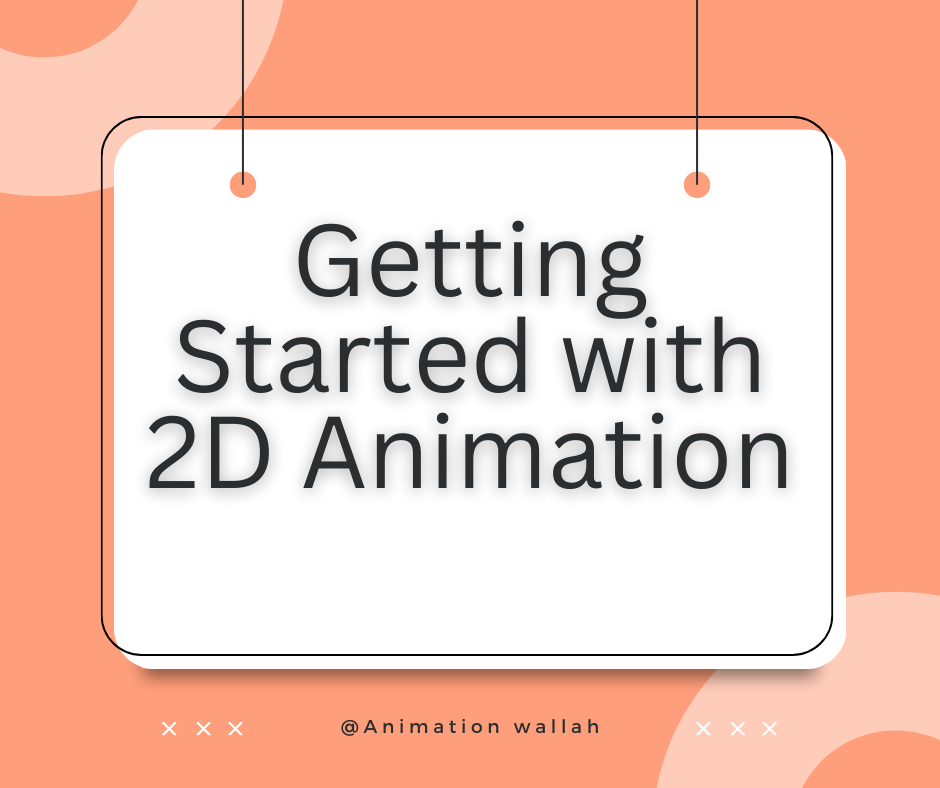Getting Started with 2D Animation: A Beginner’s Guide
Introduction
In recent years, 2D animation has experienced a resurgence, captivating audiences worldwide with its nostalgic charm and creative versatility. Whether you’re interested in creating animated shorts, cartoons, or educational videos, learning 2D animation is an excellent starting point for aspiring animators. This beginner’s guide will walk you through the essentials of 2D animation, from understanding key concepts to choosing the right tools. By the end, you’ll be ready to dive into your own animation projects with confidence.
What is 2D Animation?
2D animation is a technique where images are created in a two-dimensional space to give the illusion of movement. Unlike 3D animation, which adds depth, 2D animation sticks to height and width, allowing animators to create lively, stylized characters and environments. Popularized by classic Disney movies, 2D animation remains popular today in everything from social media videos to video games and educational content.
Why Learn 2D Animation?
Learning 2D animation opens up many creative opportunities. Here are a few reasons why beginners should consider starting with 2D animation:
Ease of Learning: Compared to 3D animation, 2D is often easier to grasp, especially for beginners.
Creative Control: 2D animation allows you to explore various art styles and storytelling techniques.
High Demand: The need for engaging 2D content is growing across social media, advertising, education, and entertainment.
Step 1: Understand the Basics of Animation
Before you jump into software and tools, it’s essential to understand fundamental animation concepts. Here are some of the core principles:
1. Squash and Stretch: Adds realism by emphasizing the impact and weight of moving objects.
2. Timing and Spacing: Determines the speed and smoothness of animation, essential for creating lifelike movements.
3. Anticipation: Prepares viewers for action, making movements look natural and intuitive.
4. Follow-Through and Overlapping Action: Helps create fluid, realistic movement by accounting for secondary motion.
Learning these principles provides a strong foundation for any animation style or medium you choose.
Step 2: Choose the Right Software
Choosing the right software is crucial when getting started in 2D animation. Here are some popular tools used by beginners and professionals alike:
Adobe Animate: A powerful and user-friendly tool for creating vector-based 2D animations, ideal for beginners and intermediate animators.
Toon Boom Harmony: A more advanced tool often used by professional studios, with extensive rigging and character animation features.
OpenToonz: A free and open-source option, offering a range of features for both beginner and professional animators.
While learning software can feel overwhelming, starting with Adobe Animate provides a great balance of accessibility and professional-grade features.
Step 3: Start with Basic Animation Exercises
To build your skills, start with simple animation exercises. Here are a few exercises for beginners:
1. Ball Bounce: Create a bouncing ball animation to learn about squash and stretch.
2. Walk Cycle: Experiment with animating a basic walk cycle to understand timing and spacing.
3. Character Expression: Animate a character’s facial expressions to practice subtle movements and emotions.
Practicing these exercises will help you gain confidence and familiarize yourself with the animation process.
Step 4: Learn the Art of Storyboarding
Storyboarding is an essential skill for animators, helping you map out scenes and visualize the storyline. A good storyboard serves as a blueprint for your animation, showing how scenes connect and guiding camera angles, character movements, and dialogue. Start by sketching your scenes on paper, or use digital tools like Storyboard Pro to create more detailed visuals.
Step 5: Experiment with Keyframes and Tweening
Once you’ve practiced the basics, you can explore **keyframes** and **tweening**. Keyframes mark significant points in your animation while tweening fills in the frames between them to create smooth motion. Most animation software has tools for creating tweened motion, allowing you to animate with greater efficiency and precision.
Step 6: Add Sound and Export
Adding sound effects, voiceovers, or background music can enhance the impact of your animation. Adobe Animate and other tools make it easy to sync audio with your visuals, creating a more immersive experience for your audience. Once completed, export your animation in a suitable format (such as MP4 or GIF) for sharing on social media or other platforms.
Final Tips for Beginners
Stay Consistent: Regular practice is key to mastering 2D animation. Dedicate time to hone your skills and explore new techniques.
Get Inspired: Study animations that inspire you, analyze how they use the principles of animation, and experiment with similar styles.
Join a Community: Online communities, forums, and social media groups can provide valuable feedback, resources, and networking opportunities.
Conclusion
Starting your journey in 2D animation may seem challenging, but with the right approach and dedication, you can create captivating animations in no time. By mastering basic principles, practicing regularly, and experimenting with software, you’ll build a solid foundation for a future in animation. Ready to bring your ideas to life? Get started today and discover the endless possibilities of 2D animation!


1 thought on “Getting Started with 2D Animation: A Beginner’s Guide in 2025”